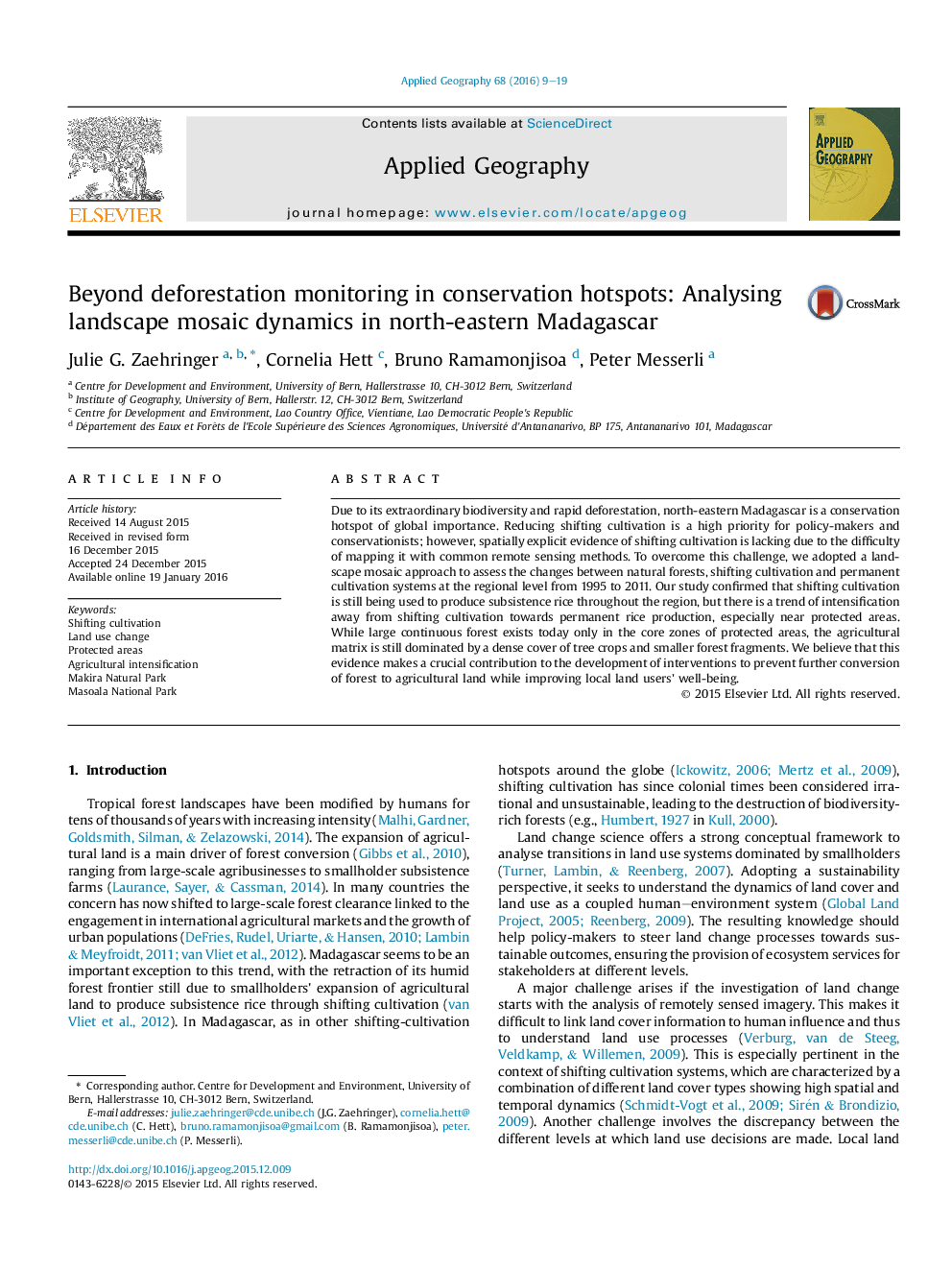| Article ID | Journal | Published Year | Pages | File Type |
|---|---|---|---|---|
| 83171 | Applied Geography | 2016 | 11 Pages |
•We used a landscape mosaic approach to delineate shifting cultivation (SC) in Madagascar.•Regional land use changes were assessed from 1995 to 2011.•Continuous forest areas are restricted to the core zones of protected areas.•SC is used to produce rice for subsistence 85% of the region.•Intensification from SC to irrigated rice was the most common landscape change.
Due to its extraordinary biodiversity and rapid deforestation, north-eastern Madagascar is a conservation hotspot of global importance. Reducing shifting cultivation is a high priority for policy-makers and conservationists; however, spatially explicit evidence of shifting cultivation is lacking due to the difficulty of mapping it with common remote sensing methods. To overcome this challenge, we adopted a landscape mosaic approach to assess the changes between natural forests, shifting cultivation and permanent cultivation systems at the regional level from 1995 to 2011. Our study confirmed that shifting cultivation is still being used to produce subsistence rice throughout the region, but there is a trend of intensification away from shifting cultivation towards permanent rice production, especially near protected areas. While large continuous forest exists today only in the core zones of protected areas, the agricultural matrix is still dominated by a dense cover of tree crops and smaller forest fragments. We believe that this evidence makes a crucial contribution to the development of interventions to prevent further conversion of forest to agricultural land while improving local land users' well-being.
Graphical abstractFigure optionsDownload full-size imageDownload as PowerPoint slide
